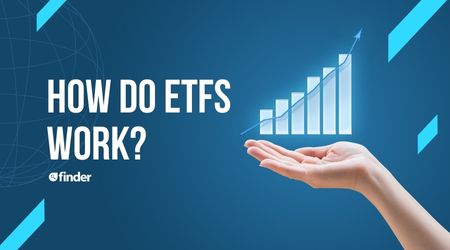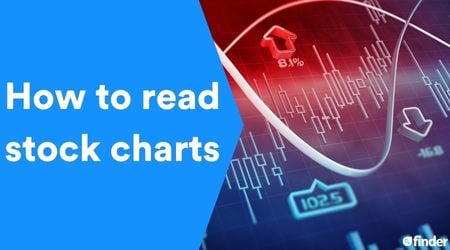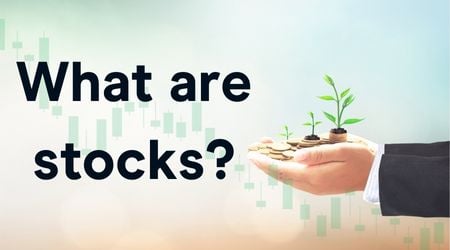The exchange rate between a currency pair can change suddenly. These fluctuations could transform a good investment into a poor one — and quickly too.
To avoid losing too much on your investments, especially in volatile markets, consider a stop-loss order.
What is a stop-loss order?
A stop-loss order is a “hedging” tool. When you place a stop-loss order, your brokerage will buy or sell a stock or currency at a price that you specify.
For example, say you buy 50 stocks of Company A for $100 and set a stop-loss order for $80. If the value of the stocks drop below $80, a market order is triggered, and you’re stocks are sold for just under $80.
As another example, if you currently hold the CAD/JPY currency pair and the price is CAD/JPY = 100 (meaning $1 buys 100 yen), you might put in a stop-loss order to sell at CAD/JPY = 98. This means that once the exchange rate hits 1 CAD = 98 JPY, your brokerage will automatically sell your holding.
Why is a stop-loss order useful?
A stop-loss order is used to limit your losses. If you buy a currency holding and place a stop-loss order 5% below the price at which you made the purchase, then the most you can lose on your investment is 5%.
Using stop-loss orders to limit losses from shorting
We’ve already gone over examples of using stop-loss orders to sell currency. Here’s an example for using a stop-loss order to buy currency.
A common strategy in both stock trading and forex trading is shorting currency. Basically, that means you’re hoping a stock or currency will decrease in value.
For example, let’s say $100 buys 1 stock in Company A right now, but you think the stock will decrease in value over the next week. In this case, you could sell the stock immediately, hoping to buy back the stock when it’s less expensive — say, $90. But if the stock value actually increases to $110, you’d be out $10 to buy it back.
To prevent this, you can place a stop-loss order to buy back the stock if it hits, say, $105. That way, if you bet wrongly on the stock price’s movement, you wouldn’t lose as much.
How does this work when trading currencies? Let’s say $1 buys 100 yen right now, but you think the dollar will go down against the yen. In this case, you could sell the dollar for yen immediately, hoping to sell the yen back to dollars at a favorable exchange rate — say, CAD/JPY = 98.
But what if something happens in the world and the exchange rate shoots to CAD/JPY = 115? You have a lot of yen on your hands, but you’d take a big loss if you sold it back for dollars. You can place a stop-loss order to sell your yen for dollars at more advantageous price — say, CAD/JPY = 102. If the price of the currency pair moves against you, at least you won’t lose your shirt from shorting the pair.
Compare stock trading platforms that support stop orders
Finder Score for stock trading platforms
To make comparing even easier we came up with the Finder Score. Trading costs, account fees and features across 10+ stock trading platforms and apps are all weighted and scaled to produce a score out of 10. The higher the score, the better the platform—it's that simple.
Are there any drawbacks?
Though the stop-loss order is nice in theory, in practice it doesn’t always work perfectly. Your stop-loss order could be triggered at a certain price, but you may not actually get that price — instead, your order will be fulfilled at the next available price. That’s because when you’re trading stocks or currencies, there needs to be someone else trading with you.
In fast-moving markets, the next available price means that you may end up losing more than you originally thought you would.
What else should I know?
Some traders recommend that instead of setting stop-loss orders, you should set up price alerts. This way you can decide for yourself what to do next, rather than trigger buying or selling your currency automatically.
Frequently asked questions
More on investing

How to invest in the EURO STOXX 50
Want to invest in the Euro Stoxx 50 in Canada? Explore investment platforms and popular Euro Stoxx 50 index funds.
Read more…
What are the best stocks for beginners with little money to invest?
Want to dive into investing but don’t have much to spend? Take a look at these types of stocks.
Read more…
Meme stocks: What they are and examples of popular stocks
Meme stocks can produce large gains in short periods, but the stocks are volatile.
Read more…
How do ETFs work?
Your guide to how ETFs work and whether this type of investment is right for you.
Read more…
How to read stock charts
Learning how to read stock charts and recognize chart patterns can unlock your success as a trader.
Read more…
What are stocks?
Owning a stock means you own part of a company and can potentially grow your wealth. But there is a risk of loss.
Read more…More guides on Finder
-
How to buy Newsmax stock in Canada
Steps to owning and managing NMAX, with 24-hour and historical pricing before you buy.
-
How to buy Arm stock in Canada
Everything we know about the Arm Holdings plc American Depositary Shares IPO plus information on how to buy in.
-
How to buy VinFast stock in Canada
Everything we know about the VinFast Auto LtdOrdinary Shares IPO plus information on how to buy in.
-
How to buy Trump Media & Technology Group stock in Canada
Steps to owning and managing DJT, with 24-hour and historical pricing before you buy.
-
National Bank Direct Brokerage review
Explore the perks and drawbacks of this commission-free brokerage in our NBDB review.
-
Best renewable energy stocks
These are the best renewable energy stocks to buy now in Canada.
-
10 best trading platforms and apps in Canada for 2025
Whether you’re a new or experienced investor, these are the best stock trading platforms and apps in Canada.
-
How to buy Instacart stock in Canada
Steps to owning and managing CART, with 24-hour and historical pricing before you buy.
-
How to buy Grail stock in Canada
Steps to owning and managing GRAL, with 24-hour and historical pricing before you buy.
-
How to buy HYBE stock in Canada
Steps to owning and managing HYBE (formerly Big Hit Entertainment), with 24-hour and historical pricing before you buy.
